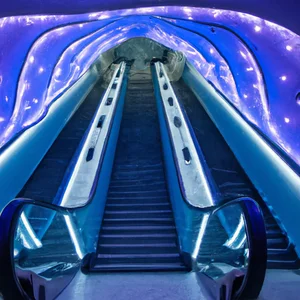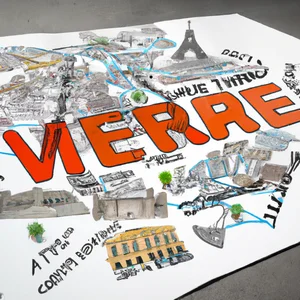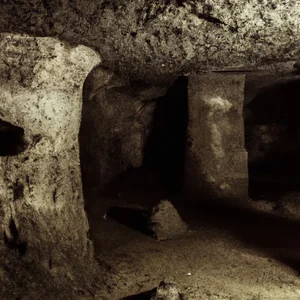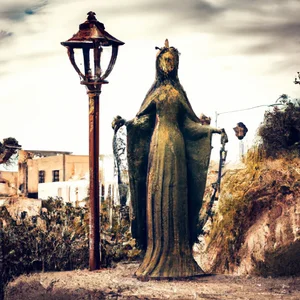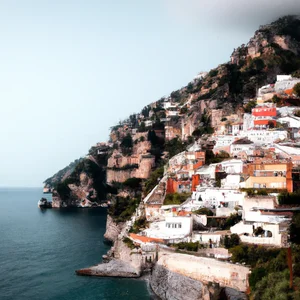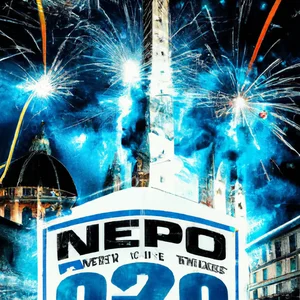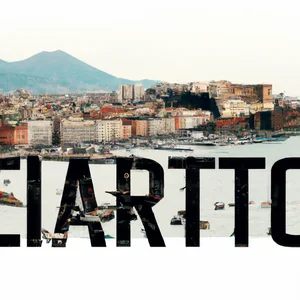Naples, one of the most fascinating and vibrant cities in Italy, is a crossroads of history, culture and tradition that fascinates visitors of all kinds. Located in the heart of the Mediterranean, Naples is a metropolis that preserves a unique heritage, the result of millennia of historical and cultural influences. Since its foundation, which took place over 2,500 years ago, the city has seen the passage of different civilisations, which have left an indelible mark on the urban and social fabric. This article will explore ten key aspects that make Naples an unmissable destination. We will start with its history and culture, which tell of a past full of events and famous people. Tourist attractions, from historic monuments to wonderful museums, offer a glimpse of the city’s grandeur. We cannot talk about Naples without mentioning its gastronomy, renowned throughout the world for iconic dishes such as pizza, which represents a true symbol of the city.Neapolitan traditions and holidays, deeply rooted in daily life, further enrich the visitor experience. The characteristic neighborhoods, each with its own identity, are an invitation to discover the authenticity of local life. The art and architecture, visible in every corner, tell stories of great beauty and innovation. The vibrant nightlife offers entertainment for all tastes, while the shopping and markets allow you to immerse yourself in the local culture. Finally, transportation and accessibility make the city easy to explore, and excursions in the surrounding area offer the opportunity to discover breathtaking landscapes and historic sites. Naples is not just a city to visit, but an experience to live, a journey that enriches the soul and stimulates the senses.
History and culture of Naples
Naples, one of the oldest cities in Europe, boasts a rich and complex history that is intertwined with the events of different civilizations. Founded by the Greeks in the 7th century BC. with the name of Neapolis, which means “new city”, Naples was an important commercial and cultural center in the Mediterranean.
Ancient origins
The history of Naples is marked by the domination of various peoples, including the Romans, who transformed it into a flourishing city. During the Roman Empire, Naples became a holiday resort for the Roman aristocracy, famous for its natural and cultural beauty.
The Middle Ages and the Renaissance
In the Middle Ages, Naples developed as the capital of the Kingdom of Naples and became an important cultural and artistic center during the Renaissance. The city attracted artists and intellectuals, contributing to a lively cultural exchange.
The Bourbon period
In the 18th century, Naples became the capital of the Bourbon kingdom, a period that led to important architectural and cultural works. During this period, the city was enriched with theatres, museums and palaces, many of which can still be visited today.
Cultural influences
Neapolitan culture is a mix of local traditions and external influences. From classical music, with composers such as Bellini and Verdi, to the famous Neapolitan music, the city is a beacon of creativity. Neapolitanism is also expressed through theatre, art and literature, with emblematic figures such as Salvatore Di Giacomo and Eduardo De Filippo.
Unesco heritage
Naples is also known for its UNESCO cultural heritage, which includes the historic centre, the Royal Palace, the Chapel of Sanseveroand the Castel Nuovo, among others. These places represent the city’s rich past and its historical and cultural importance.
In summary, the history and culture of Naples are a fascinating journey through the ages, rich in influences and traditions that continue to live on in the daily life of the city.
Tourist attractions
Naples is a city full of tourist attractions, ranging from historical sites to natural wonders. Here are some of the main attractions that you cannot miss during your visit:
The National Archaeological Museum of Naples
This museum is one of the most important in the world for classical art and archaeology. It houses a vast collection of finds from Pompeii, Herculaneum and other Roman cities. Among the most famous pieces are mosaics, statues and everyday objects that offer a glimpse of life in antiquity.
The Cathedral of Naples
The Duomo is the main cathedral of the city, dedicated to San Gennaro, the patron saint of Naples. The cathedral is famous for its crossroads of architectural styles, ranging from Gothic to Baroque. Every year, the city celebrates the miracle of San Gennaro, when his blood, preserved in a vial, liquefies.
Plaza del Plebiscito
This majestic square is the heart of Neapolitan public life. Surrounded by important buildings such as the Royal Palace and the Basilica of San Francesco di Paola, it is an ideal place to walk and enjoy the vibrant atmosphere of the city. During the year, the square hosts cultural events and concerts.
Castel dell’Ovo
The Castel dell’Ovo is the oldest castle in Naples, located on an island in the Gulf of Naples. Legend has it that the Roman poet Virgil hid a magical egg in the foundations of the castle, which will protect the city. From here, you can enjoy spectacular views of the bay and Vesuvius.
Pompeii and Herculaneum
The ruins of Pompeii and Herculaneum are easily reachable from Naples and represent an important tourist attraction. These ancient Roman cities were preserved by the eruption of Vesuvius in 79 AD. and offer a fascinating insight into daily life at the time.
Vesuvius
A visit to Naples cannot be complete without an excursion to Vesuvius, the famous volcano that dominates the landscape. It is possible to walk along the paths that lead to the crater and admire the breathtaking view of the city and the sea below.
These attractions represent only part of the rich tourist offer of Naples, which combines history, culture and natural beauty, making the city a fascinating place to explore.
Neapolitan gastronomy
Neapolitan gastronomy is famous throughout the world for its variety, flavor and tradition. The cuisine of Naples is a perfect combination of fresh ingredients, recipes handed down from generation to generation and different cultural influences, the result of centuries of history.
Symbol dish: Neapolitan Pizza
The Neapolitan pizza is undoubtedly the most representative dish of Naples. Characterized by a thin and soft dough, it is cooked in a wood oven and seasoned with San Marzano tomatoes, buffalo mozzarella, fresh basil and a drizzle of extra virgin olive oil. There are two main variations: the Margherita and the Marinara, both protected by regulations that guarantee their authenticity.
Other traditional dishes
In addition to pizza, Neapolitan cuisine offers a wide range of typical dishes:
- Spaghetti alle Vongole: a simple pasta dish but rich in flavour, prepared with fresh clams, garlic, oil and parsley.
- Neapolitan Ragù: a sauce rich in meat, cooked slowly, often served with pasta, such as ziti or paccheri.
- Pasta Frittatina: a traditional street food, a sort of pasta pie with béchamel sauce, peas and ham, fried until golden brown.
- Caprese: a fresh salad made with tomatoes, buffalo mozzarella, basil, oil and salt.
Typical desserts
The Neapolitan confectionery tradition is equally rich:
- Pastiera Napoletana: an Easter dessert made with ricotta, wheat, candied fruit and herbs.
- Babà: a mushroom-shaped dessert, soaked in rum, often filled with cream or cream.
- Zeppole di San Giuseppe: fried or baked desserts, filled with custard, typical of the feast of San Giuseppe.
Markets and street food
Naples is also famous for its local markets, where you can find fresh ingredients and dishes to enjoy on the go. The Porta Nolana Market and the Pignasecca Market are ideal places to savor true Neapolitan street food, such as sfogliatelle, fried cuoppi and pocket pizza.
Conclusions
Neapolitan gastronomy is not just a set of dishes, but a cultural experience that reflects the history and traditions of the city. Every bite tells a story and offers a piece of the soul of Naples.
Traditions and holidays in Naples
Popular traditions
Naples is a melting pot of traditions that have their roots in the history and culture of the Neapolitan people. One of the most famous traditions is that of the Neapolitan Nativity scene, an art that dates back to the 18th century and which represents scenes of daily life with typical characters and sacred figures. The nativity scenes are set up in various neighborhoods, but San Gregorio Armeno is the nerve center for those looking for Christmas figurines and crafts.
Religious holidays
Religious holidays are of fundamental importance in Neapolitan life. One of the most heartfelt celebrations is the Feast of San Gennaro, patron saint of the city, which is held on September 19th. During this festival, the faithful gather in the Cathedral of Naples to witness the miracle of the liquefaction of the saint’s blood, an event that also attracts many tourists.
Cultural events
Naples hosts numerous cultural events during the year, such as the Napoli Teatro Festival and the Napoli Film Festival, which celebrate local and international artistic talent. Furthermore, the Night of Museums, held in May, allows you to visit the city’s museums and art places with free entry and at night, creating a magical atmosphere.
Features of the holidays
The holidays in Naples are characterized by strong popular participation, with processions, concerts and fireworks shows. The streets come alive with colours, music and flavours, creating a festive and welcoming atmosphere that attracts visitors from all over the world.
Conclusion
The rich legacy of traditions and holidays makes Naples a vibrant city, where the past and present intertwine in a kaleidoscope of cultural experiences. Visiting Naples during the holidays means immersing yourself in a living and pulsating heritage, where every corner tells a story and every celebration is an opportunity to celebrate the community and its identity.
Characteristic neighborhoods of Naples
Historical Center
The Historical Center of Naples is a UNESCO World Heritage Site and represents the beating heart of the city. Here you can find some of the most iconic places, such as Piazza del Plebiscito, Via Toledo and the Duomo of Naples. The narrow streets, historic buildings and ancient churches tell of centuries of history and culture.
Spaccanapoli
Spaccanapoli is one of the most famous streets in the city, which cuts the historic center in two. Along this street you can discover numerous shops, pizzerias and historic churches, such as Gesù Nuovo and Santa Chiara. It is an ideal place to walk and immerse yourself in the lively atmosphere of Naples.
Spanish Quarter
Located between Via Toledo and the seafront, the Quartieri Spagnoli are a labyrinth of alleys and streets. Known for their authenticity, these neighborhoods offer a unique experience, with murals, artisan shops and traditional trattorias. Here you can feel the true essence of Neapolitan life vibrating.
Vomero
Vomero is a hilly neighborhood that offers a panoramic view of the city and the gulf. It is famous for its elegant shops, cafes and restaurants. Attractions such as the Castel Sant’Elmo and the Certosa di San Martino are unmissable for those visiting this area.
Borgo Marinari
The Borgo Marinari is a picturesque neighborhood located on the islet of Megaride, near the Castel dell’Ovo. Characterized by fish restaurants and a breathtaking view of the sea, it is the ideal place for a romantic walk or to enjoy an aperitif at sunset.
Healthcare
The Sanità neighborhood is known for its popular traditions and for the presence of important churches, such as the Catacombs of San Gennaro. This neighborhood is an example of how Naples manages to keep its traditions alive, with local markets and neighborhood festivals.
Chiaia
The Chiaia district is known for its high fashion boutiques and lively nightlife. Some of the best restaurants in the city are also located here, making it an ideal destination for those looking for a mix of shopping and gastronomy.
Conclusion
The characteristic neighborhoods of Naples offer a unique and varied experience, reflecting the diversity and cultural richness of the city. Each neighborhood has its own identity and history, making Naples a city worth exploring thoroughly.
Art and architecture in Naples
Naples is a city rich in art and architecture, which reflect its long and complex history, influenced by different cultures and dominations. From ancient Naples to the present day, Neapolitan art has been able to express its unique identity through a variety of styles and movements.
Historical architecture
The historic center of Naples has been declared a World Heritage Site by UNESCO and is home to a myriad of historic buildings. Among the most significant we find:
- Naples Cathedral: dedicated to San Gennaro, the patron saint of the city, it represents an example of Gothic and Baroque architecture.
- Castel Nuovo: symbol of the city, this medieval castle is also known as Maschio Angioino and has an imposing façade with arches and towers.
- Piazza del Plebiscito: surrounded by historic buildings such as the Royal Palace and the Basilica of San Francesco di Paola, it is the beating heart of Neapolitan life.
Contemporary art
In addition to historical architecture, Naples is also a center for contemporary art. Art galleries and museums, such as MADRE (Donnaregina Contemporary Art Museum), offer a platform for emerging artists and modern works.
Theatre and opera
The Teatro di San Carlo, inaugurated in 1737, is one of the oldest and most prestigious opera houses in the world. Its perfect acoustics and architectural beauty make it a must for music and theater lovers.
Murals and street art
In recent years, Naples has seen a flourishing of murals and works of street art, which embellish neighborhoods and tell stories of daily life and local traditions. Areas such as the Quartieri Spagnoli have become famous for their colorful murals and artistic performances.
In summary, the art and architecture of Naples not only tell the story of the city, but continue to evolve, reflecting the creativity and vitality of its inhabitants.
Nightlife in Naples
The nightlife of Naples is a vibrant and unique experience, characterized by a blend of tradition and modernity. The city offers a wide range of options for having fun after dark, from bars to clubs, theaters and live concerts.
Bars and Pubs
One of the liveliest areas for nightlife is Chiaia, an elegant neighborhood with numerous bars and pubs. Here, you can enjoy an aperitif with a view of the sea or sip a cocktail in the company of friends. Other places to consider are Vomero, famous for its panoramic terraces, and the Centro Storico, where there are historic and characteristic venues.
Clubs and Discos
For those who love dancing, Naples offers a selection of discos that attract both locals and tourists. The most popular clubs are located along the seafront and in the Porto district, where you can find internationally renowned DJs and themed nights. During the summer, many open-air nightclubs offer events along the beach, creating a festive and lively atmosphere.
Theatre and Music
Naples’ cultural scene is just as active at night. The Teatro di San Carlo, one of the oldest and most prestigious theaters in Europe, offers opera and ballet performances. Furthermore, it is possible to attend live music concerts in various venues, ranging from traditional Neapolitan music to jazz and rock.
Night Events and Festivals
During the year, Naples hosts various events and festivals which enliven the Neapolitan nights. Among these, the Napoli Jazz Festival and the Magliocca Festival, which celebrate local music and culture. Furthermore, the city is famous for its festive atmosphere during the Christmas period, when the streets are lit up and night markets are held.
Advice for a night in Naples
To fully enjoy the nightlife in Naples, it is advisable to move on foot or use public transport, as traffic can be intense. It is also important to keep safety in mind and pay attention to personal belongings, especially in busy areas. Don’t forget to savor a Neapolitan pizza or a sfogliatella while enjoying the evening!
Shopping and markets in Naples
Naples is a vibrant city full of shopping opportunities, with a variety of markets, boutiques and shops offering unique, artisanal products. Here are some of the best shopping experiences you can have in Naples.
Historical markets
One of the most characteristic places for shopping in Naples is the Porta Nolana Market, famous for its fresh fish and typical local products. Here, visitors can immerse themselves in the lively atmosphere of the market and savor the authenticity of Neapolitan daily life.
Another unmissable market is the Pignasecca Market, the first open-air market in the city. This market offers a wide range of products, from fresh fruit and vegetables to local gastronomic specialties. It’s a great place to find fresh ingredients to prepare typical Neapolitan dishes.
Shopping for crafts and souvenirs
For those looking for souvenirs and typical products, the Quartieri Spagnoli is the right place. Here you can find numerous artisan shops selling ceramics, Neapolitan nativity scenes and coral items. Don’t forget to visit Via San Gregorio Armeno, famous for its nativity scene artisans, where you can find unique and artistic figures.
Boutiques and fashion shops
Naples also offers a selection of fashion boutiques and local designer shops. Via Chiaia is one of the main streets for fashion shopping, with shops of national and international brands. Here you can find high quality clothing, accessories and footwear.
Shopping centers
For a more modern shopping experience, you can visit the La Birreria Shopping Center or the Auchan Shopping Center, where you will find a wide range of shops, restaurants and entertainment for the whole family.
Food shopping
Don’t forget to explore the local food shops, such as historic pizzerias and sweet shops. Via dei Tribunali is famous for its pizzerias, while in Via Toledo you can find pastry shops that offer typical desserts such as sfogliatella and babà.
In summary, Naples is a true paradise for shopping lovers, where tradition and modernity meet, offering a unique and unforgettable experience.
Transport and accessibility
Naples is a well-connected city, both internally and to surrounding destinations. Public transport is varied and includes different means of transport that facilitate mobility for residents and tourists.
Subway
The Naples Metro is made up of two main lines: Line 1, which crosses the city from north to south, and Line 6, which connects the center with the Fuorigrotta district. Line 1 is known for its artistic stations, which host contemporary works of art.
Buses and Trams
The bus service is provided by the ANM and covers large areas of the city, while the tram connects some strategic areas. Buses are frequent and a cheap way to get around.
Funiculars
The funiculars of Naples, such as those of Chiaia and Mergellina, offer a panoramic and practical way to go up to the hilly districts, facilitating access to places such as Vomero.
Taxis and Ride-Sharing Services
Taxis are available throughout the city and can be booked via the app. ride-sharing services such as Uber are present but with limited availability compared to other cities.
Accessibility
Many means of public transport are equipped with accessibility for disabled people, although the conditions of the roads and stops may vary. It is advisable to find out in advance about accessible routes and stations.
Connections with the Airport
The Naples-Capodichino International Airport is well connected to the city center by buses, taxis and shuttle services. The Alibus service offers a direct connection to the center and other main destinations.
Parking
Parking availability in the center can be limited and expensive. It is advisable to use public car parks or paid parking facilities to avoid fines and difficulties in finding a parking space.
Excursions around Naples
Naples is an ideal base for exploring numerous nearby attractions, thanks to its strategic location in southern Italy. Excursions can range from short day trips to longer explorations, offering a wide range of natural, historical and cultural experiences.
Pompeii and Herculaneum
One of the most popular excursions is to Pompeii and Herculaneum, two Roman cities buried by the eruption of Vesuvius in 79 AD. Visitors can walk among the well-preserved ruins of Pompeii, admiring theaters, temples and frescoed houses. Herculaneum, less crowded, offers an equally fascinating experience with its mosaics and architectural structures.
Vesuvius
Another unmissable excursion is the one to Vesuvius, the volcano that dominates the Neapolitan landscape. Visitors can hike up to the crater, which offers spectacular views of the Gulf of Naples. On the way up, there are viewpoints and opportunities to learn more about the geology and history of the volcano.
Amalfi Coast
The Amalfi Coast, with its picturesque villages of Amalfi, Positano and Ravello, is easily reachable from Naples. This region is famous for its breathtaking views, winding roads and enchanting beaches. Tourists can explore the characteristic streets, taste local specialties and visit the numerous craft shops.
Capri and Ischia
The islands of Capri and Ischia are other fascinating destinations for a boat trip. Capri is known for its stacks, the Gardens of Augustus and the famous Blue Grotto. Ischia, on the other hand, is famous for its thermal springs and beautiful gardens. Both islands offer a unique experience, with opportunities to relax and enjoy natural beauty.
Caserta
The Reggia di Caserta, an imposing 18th-century palace, a UNESCO World Heritage Site, is another popular destination. Visitors can explore the royal apartments and stroll through the vast gardens, admiring fountains and sculptures that reflect the magnificence of the Bourbon monarchy.
In conclusion, Naples offers a wide range of excursions in the surrounding area, each of which allows you to discover the rich history, culture and natural beauty of Campania. Whether it’s ancient ruins, coastal scenery or enchanting islands, there are options for every taste.

